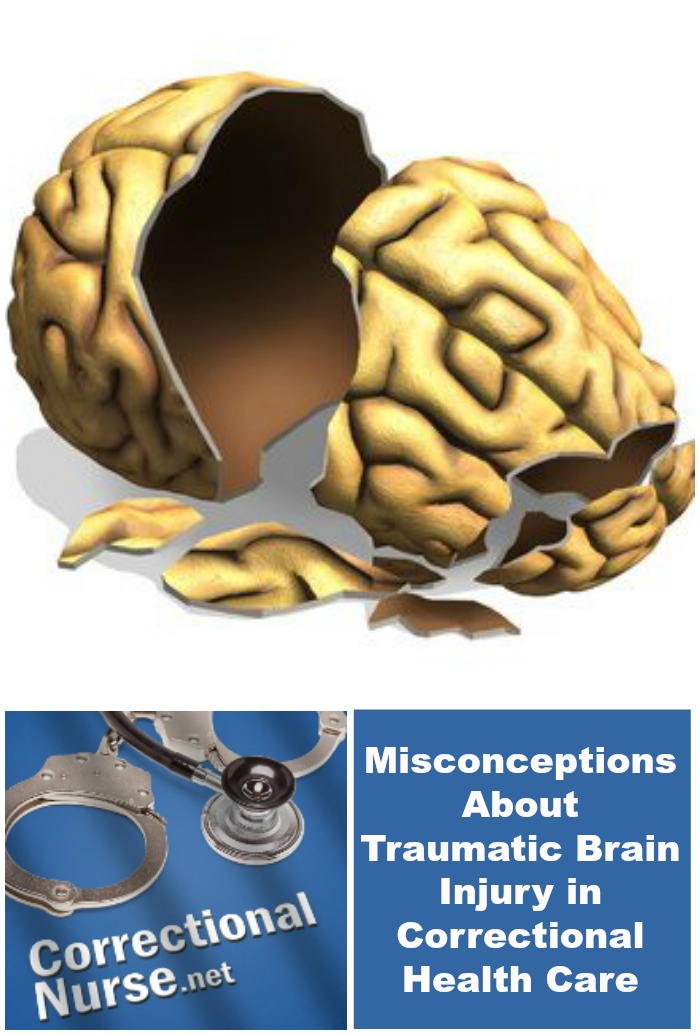 Research published in the Journal of Correctional Health Care (JCHC) provides food for thought on our understanding of traumatic brain injury for our patient population. Here are my thoughts on the research and what it means for correctional nursing practice.
Research published in the Journal of Correctional Health Care (JCHC) provides food for thought on our understanding of traumatic brain injury for our patient population. Here are my thoughts on the research and what it means for correctional nursing practice.
The Article
Yuhasz, J. E. (2013). Misconceptions about traumatic brain injury among correctional health care professionals. Journal of Correctional Health Care, 19(2).
Big Idea
Traumatic Brain Injury (TBI) is seven times more prevalent in the inmate patient population than in the general public. One study found 60% of inmates with the condition. Even though TBI is getting increased media coverage, many misconception remain. These misconceptions can lead to delayed or absent identification, accommodation, and treatment while incarcerated.
Survey Says!
An online survey was undertaken of health care professionals working in facilities in New Jersey with 155 respondents. The survey contained 33 items grouped into five domains: use of seatbelts, unconsciousness, amnesia, brain damage, and recovery. Results indicate that the correctional health care professionals surveyed had significantly fewer misconceptions than the general population. However, half the participants believed that less than 10% of their patients had a history of TBI – indicating an under-estimation of the real problem. In addition, a significant amount of participants had misconceptions about the relationship of unconsciousness and amnesia to resulting TBI.
Quotable
“For example, if during incarceration an inmate experiences a mild TBI and the loss of consciousness is perceived to leave no permanent effect, it is unlikely that appropriate follow-up care would be offered or further assessment be conducted to determine the presence of any TBI sequelae.”
So What?
If correctional nurses are not aware of the high rate of TBI in our patient population, we will not be alert for symptoms such as headaches, dizziness, or poor coordination. In addition, awareness of TBI can ensure that appropriate services are considered and offered. We need to seek out education to dispel any remaining misconceptions about the condition and establish processes to evaluate for the condition on entry into the facility and after any head trauma experience such as an inmate fight, assault, or physical take-down.
Hat tip to fellow nurse blogger, @joniwatson, and her blog Nursetopia for this catchy way to present research.
Photo Credit: © AlienCat – Fotolia.com
Art Beeler says
Great article on TBI. Interesting article from NZ on the subject also.